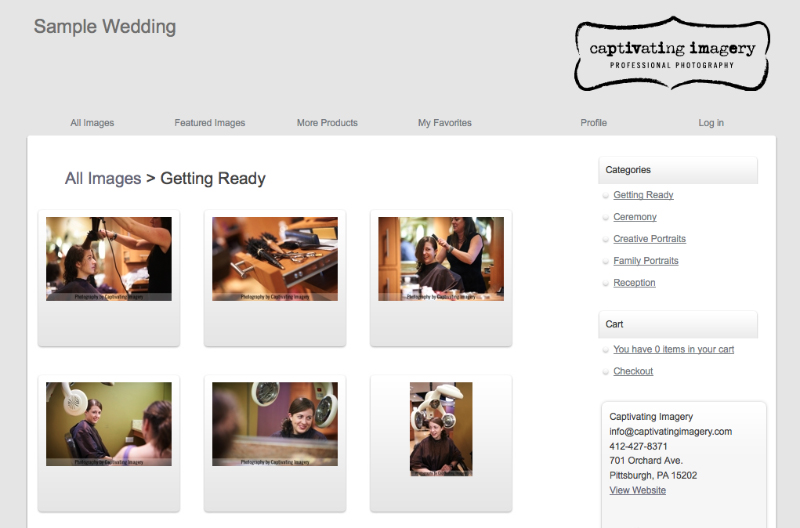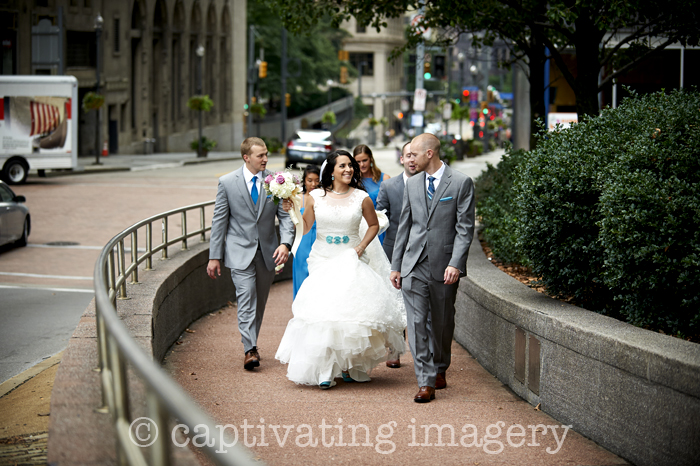Online Proofing vs. Print Sales Companies Like Pictage
About a year ago, I made a change in how I sell prints to my wedding and portrait clients. I’m pretty excited about it because I believe it really improves their overall experience with Captivating Imagery and ensures top-notch quality photographic prints. First, let me describe what brought me to this change.
If you’ve shopped around for wedding photography or portraits before, it’s likely you’ve come across Pictage, a large company based in California that provides an online platform for selling and fulfilling print orders through their in-house lab. At first, it seemed like a no-brainer for photographers who want to focus on their craft and not get tied up with fulfilling client orders. I used Pictage for sales and print fulfillment for a few years and was happy to have someone else handle my print orders especially as I was busy building my business.
But the photographer in me, a.k.a. my type A side, could not overlook the fact that I wasn’t seeing my work going out and into the hands of my clients. How could I be certain of quality control? Not to say that I doubt Pictage’s print quality, but there’s a lot more than meets the eye that goes into making good prints, so I decided to take back control and personalize this process by accepting orders though my own online proofing galleries.
In the wedding photography business nowadays, most clients expect to get a disc of their images with permission to print them for personal use. And I don’t see why they shouldn’t, because it’s great to have a thorough set of images documenting their day. The value of that is substantial and increases with each year that passes. But I’d like to point out some flaws in this business structure and encourage other photographers to elevate the quality of their prints by getting in between sales and print fulfillment.
When you process 500 plus images to burn to a disc, you can’t possibly ensure that each photo will print as the best print possible because of the shear quantity of files you’re dealing with. As a result, it’s standard to make general adjustments to each file for exposure, color-correction, contrast, or by adding a vignette and then move on to upload the images to a web gallery where clients will order their images and photographers are no longer involved in the process. This is where I think this method falls apart. If you could know which files your client would purchase from that web gallery, wouldn’t you take some extra steps to make sure the file looks its very best? For example, by my decision to get in between the print sales and print fulfillment, I now have the ability to retouch the images I know my clients are ordering and I feel that is what really separates my prints as professional prints from the photographers who use Pictage or its many competitors like SmugMug. Taking the extra step of retouching every image in a set of 500 or more is pretty much unheard of—and if there are photographers out there who offer this service, they should be charging beaucoup bucks, because the time that it would take to do that is incredibly valuable.
To further my point, I’ll touch a bit on some of the many things that go into making a “professional print” professional. Pros like myself use professional monitors that are highly calibrated to an industry standard so that images edited and retouched on our monitors should appear the way they will look in print. My lab has a professional lab manager who oversees all aspects of the lab to ensure the industry standard so that when I get my photos back, I am a happy girl.
In contrast, when clients take their disc of images to Target or Wal-Mart, the printers there are supervised with much less scrutiny and are set to print averages so that the darker images (think of bride and groom’s first dance in a dimly-lit ballroom) print lighter and lighter images (think of a bride by a window) print darker when that is not how they were meant to be. Treating these images as average exposures is a mistake and results in poor prints. Yuck. And you don’t even want me to get started on color variances in labs like that.
I hope I’m demonstrating the value of professional prints and by professional, I don’t mean Pictage or SmugMug, or any other company out there that’s making money off of photographers and their helpless clients. Prints and albums are the final product in most cases and I want to leave my clients with a great experience and not wonder what they’re seeing as the fruits of my labor. I feel so strongly about this that I’m confident in offering a money-back guarantee on prints ordered through all of my client proofing galleries. Yes, this approach requires more time and effort on my part, but I get the satisfaction of knowing my clients are getting good quality prints and I wouldn’t have it any other way.




i always love hearing someone talk about the value of professional prints! :)
just a note, though… not sure if you realize, but smugmug DOES allow the professional photographer to retouch images after they’ve been ordered. there is a period of several days after a client places an order for the photog to go in and retouch the specific images that were ordered. (photog can even specify ahead of time how many days they will need for each order.) and i’ve calibrated my monitor to smugmug’s printers, so the prints are perfect… though even if they weren’t up to standard, smugmug’s customer service is outstanding and they’d reprint. just thought you’d want to know so that smugmug isn’t lumped in with the rest here :)
Pamela, that’s good to know. When I looked into SmugMug, I was hoping to find that they offered that ability, but it wasn’t info that was readily available so I’m really happy to know that. Thanks for sharing! :)
While I can understand your desire to provide quality prints, I think you are forgetting a very important fact: what you sell online are proofs.
While Smugmug offers the ability to delay the order while you swap the image, the fact remains that what clients are purchasing is what they see and not what they hope to see in the swapped image.
David, that’s just what bothers me. I don’t want my clients having proofs as their finished product.